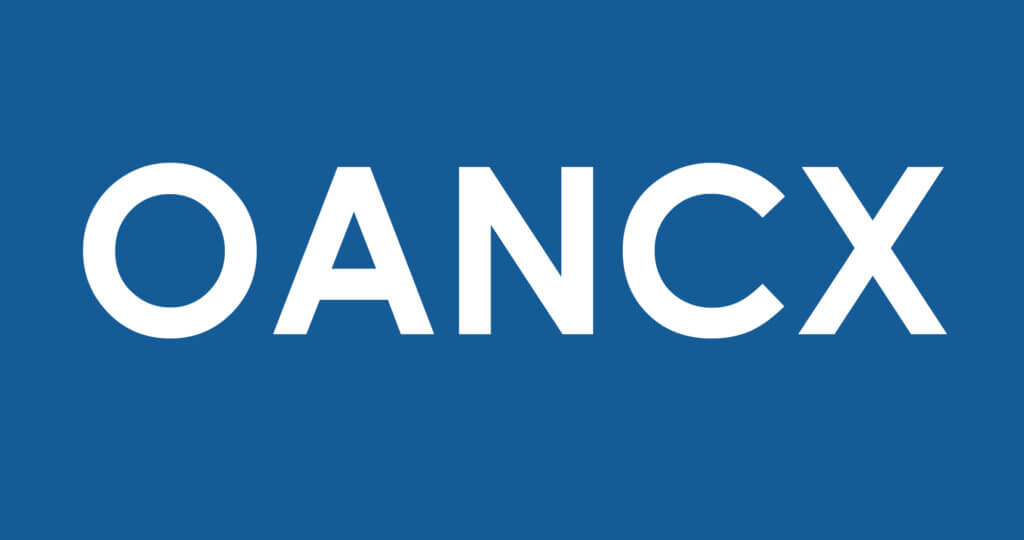Oakmark Bond Fund – Institutional Class
Average Annual Total Returns 03/31/23
Since Inception 06/10/20 -1.52%
1-year -4.63%
3-month 1.72%
Gross Expense Ratio: 1.05%
Net Expense Ratio: 0.52%
Expense ratios are from the Fund’s most recent prospectus dated January 28, 2023; actual expenses may vary.
The Fund’s Adviser has contractually undertaken to waive and/or reimburse certain fees and expenses so that the total annual operating expenses of each class are limited to 0.74%, 0.54%, 0.52% and 0.44% of average net assets, respectively. Each of these undertakings lasts until 1/27/2023 and may only be modified by mutual agreement of the parties.
Past performance is no guarantee of future results. The performance data quoted represents past performance. Current performance may be lower or higher than the performance data quoted. The investment return and principal value vary so that an investor’s shares when redeemed may be worth more or less than the original cost. To obtain the most recent month-end performance data, view it here.
Performance
The Oakmark Bond Fund (“the Fund”) returned +1.72% in the first calendar quarter of 2023, underperforming its benchmark, the Bloomberg U.S. Aggregate Bond Index, which returned 2.96%. Despite the weak relative quarter, inception-to-date performance remains acceptable in a market environment characterized by slowing growth and rising interest rates. The Fund generated a total return since inception of -1.52% through March 31, 2023, compared to the benchmark total return of -3.80%.
The Fund’s underperformance was primarily due to two problematic positions that we will detail below. Overall, our security selection for the quarter accounted for ~1.14% of underperformance. The Fund’s largest contributors to and detractors from security selection performance for the quarter were Ally Financial 4.7% perpetual preferred bonds, Warnermedia Holdings Inc. 4.054% senior unsecured bonds of 2029, Netflix Inc. 4.875% senior unsecured bond of 2030; SVB Financial Group 4.0% perpetual preferred bonds, SVB Financial Group 4.25% perpetual preferred bonds and Signature Bank New York 4.0% subordinated bonds of 2030. The Fund’s allocation decisions contributed ~27 basis points to performance, while its short duration position detracted ~24 basis points of relative performance as rates declined across the curve and the Fund’s duration was shorter than the benchmark. The Fund ended the quarter with an overall duration of ~5.37 years. Although reduced from the end of the previous quarter, the Fund holds 51% in corporate debt, 24% in government debt, and 24% in securitized credit.
We would like to address an exceptional situation concerning two investments that weighed on performance this quarter: Silicon Valley Bank (SVB Financial Group) and Signature Bank bonds. Although we typically do not discuss specific bonds at length, we believe it is necessary to make an exception in this case, as we take permanent impairment to our investments seriously. These two investment losses cost the Fund 1.7% in the quarter and were the primary drivers of the Fund falling short of the Bloomberg U.S. Aggregate Bond Index’s 2.96% return. As a team, we value transparency and believe that our investors deserve a clear explanation of the losses. It is worth emphasizing that the Fund was designed to offer investors performance derived from individual security selection, like every Oakmark fund in our family of products. This approach has yielded the Oakmark Bond Fund top-decile results in the Morningstar Intermediate Core-Plus Bond Category since our inception in June of 2020 (and maintaining a 10% percentile performance rank and a top 15th percentile Sharpe Ratio after this quarter), but it also means that incorrect bets, just like our best outcomes, will have a measurable impact on performance.
Despite our comprehensive underwriting process for both Silicon Valley Bank and Signature Bank, we failed to identify critical risks associated with these banks. We focused too much on the quality of the balance sheet assets, while ignoring embedded risks related to the average life of those assets. We also overestimated management’s ability to manage deposit flight; what appeared to be a fragmented deposit base ultimately proved to be indirectly controlled by a handful of influential venture capital entities. Moreover, we underestimated the risks associated with the banks’ real and perceived exposure to the volatile crypto market and the potential compounding of those risks after the FTX and Silvergate collapses. The swift spread of negative sentiment via social media further heightened Silicon Valley Bank and Signature Bank’s vulnerability. Investing in bank bonds in this new paradigm, where bank runs can be catalyzed with almost zero friction and the structure of the yield curve incentivizes deposit flight, it is essential to thoroughly examine both the quality and the average life of securities held on banks’ balance sheets. We must also consider how the rapid spread of sentiment through social media and other digital channels might affect the risk of future bank runs and ensure appropriate compensation for elevated tail risks in this new reality. Lastly, we will remain vigilant and adaptable in our risk management strategies to respond to these changing market conditions. We regret the impact these events had on the Fund’s performance and are committed to learning from them. Our aim is to provide a well-diversified and resilient bond portfolio capable of delivering positive results across various economic conditions. As mentioned earlier, we have built this Fund to focus on deriving performance from our individual credit selection, and we expect to continue providing consistent results in line with what we have produced since inception. We appreciate your trust in the Oakmark Bond Fund management team and invite you to reach out with any additional questions.
Positioning
In line with our analysis of the current financial landscape, we have made several strategic adjustments to our portfolio during the quarter. As credit spreads tightened significantly in January and early February, we reduced corporate exposure, specifically to lower rated high-yield securities and loans, while we increased our holdings in high-quality, agency-backed securitized debt. Consistent with our expectations from last quarter, we remain active in our preferred BBB securities, including cyclicals and both the preferred and straight bonds of regional banks. We continue to trim specific high-yield leveraged loans and bonds, particularly in the richer BB quality basket, that have met our fair-value targets. Our curve positioning strategies include: 1) extension swaps out the curve in specific corporates to capture current yield and total return opportunities on our favorite names; 2) steeper trades in U.S. Treasurys by moving out of our longest dated U.S. Treasurys into shorter dated securities in anticipation of continued curve steepening; and 3) U.S. Treasury swaps into securitized AAA paper to reduce direct U.S. Treasury exposure on certain parts of the curve and capitalize on historically widespread relationships. As volatility persists, we will continue to explore relative value swaps within capital structures, peer groups and industries. Given our expectation that a deep recession can be avoided, we are focused on economically sensitive high-yield segments to identify opportunities for high coupon carry and all-in total returns for the Fund in case of further spread widening. We will deploy capital cautiously and patiently. With regards to duration positioning, the Fund increased duration by approximately half a year during the quarter as rates rose before volatility ensued. We believe the end of the Fed’s rate hike cycle is near; however, if inflation proves more persistent than anticipated, the Fed’s pause may last longer than the market currently predicts. In our view, this could cause the curve to continue steepening, with the long end particularly vulnerable in the absence of a significant economic downturn.
The securities mentioned above comprise the following percentages of the Oakmark Bond Fund’s total net assets as of 03/31/2023: Ally Financial 4.700% Due 08-15-69 0.7%, Netflix CC 03/30 144A 4.875% Due 06-15-30 1.1%, Signature Bank New York 4.0% subordinated bonds of 2030 0%, Silvergate 0%, SVB Financial Group 4.0% perpetual preferred bonds 0%, SVB Financial Group 4.25% perpetual preferred bonds 0% and Warnermedia Holdings Inc. 4.054% senior unsecured bonds of 2029 0%. Portfolio holdings are subject to change without notice and are not intended as recommendations of individual stocks.
Access the full list of holdings for the Oakmark Bond Fund as of the most recent quarter-end.
Morningstar Intermediate Core-Plus Bond category: Intermediate-term core-plus bond portfolios invest primarily in investment-grade U.S. fixed-income issues including government, corporate, and securitized debt, but generally have greater flexibility than core offerings to hold non-core sectors such as corporate high yield, bank loan, emerging-markets debt, and non-U.S. currency exposures. Their durations (a measure of interest-rate sensitivity) typically range between 75% and 125% of the three-year average of the effective duration of the Morningstar Core Bond Index.
The Bloomberg U.S. Aggregate Index is a broad-based benchmark that measures the investment grade, U.S. dollar-denominated, fixed-rate taxable bond market. The index includes Treasurys, government-related and corporate securities, mortgage-backed securities (agency fixed-rate and hybrid ARM pass-throughs), asset-backed securities and commercial mortgage-backed securities (agency and non-agency). This index is unmanaged and investors cannot invest directly in this index.
The Oakmark Bond Fund invests primarily in a diversified portfolio of bonds and other fixed-income securities. These include, but are not limited to, investment grade corporate bonds; U.S. or non-U.S.-government and government-related obligations (such as, U.S. Treasury securities); below investment-grade corporate bonds; agency mortgage backed-securities; commercial mortgage- and asset-backed securities; senior loans (such as, leveraged loans, bank loans, covenant lite loans, and/or floating rate loans); assignments; restricted securities (e.g., Rule 144A securities); and other fixed and floating rate instruments. The Fund may invest up to 20% of its assets in equity securities, such as common stocks and preferred stocks. The Fund may also hold cash or short-term debt securities from time to time and for temporary defensive purposes.
Under normal market conditions, the Fund invests at least 25% of its assets in investment-grade fixed-income securities and may invest up to 35% of its assets in below investment-grade fixed-income securities (commonly known as “high-yield” or “junk bonds”).
Fixed income risks include interest-rate and credit risk. Typically, when interest rates rise, there is a corresponding decline in bond values. Credit risk refers to the possibility that the bond issuer will not be able to make principal and interest payments.
Bond values fluctuate in price so the value of your investment can go down depending on market conditions.
The information, data, analyses, and opinions presented herein (including current investment themes, the portfolio managers’ research and investment process, and portfolio characteristics) are for informational purposes only and represent the investments and views of the portfolio managers and Harris Associates L.P. as of the date written and are subject to change and may change based on market and other conditions and without notice. This content is not a recommendation of or an offer to buy or sell a security and is not warranted to be correct, complete or accurate.
Certain comments herein are based on current expectations and are considered “forward-looking statements”. These forward looking statements reflect assumptions and analyses made by the portfolio managers and Harris Associates L.P. based on their experience and perception of historical trends, current conditions, expected future developments, and other factors they believe are relevant. Actual future results are subject to a number of investment and other risks and may prove to be different from expectations. Readers are cautioned not to place undue reliance on the forward-looking statements.
All information provided is as of 03/31/2023 unless otherwise specified.






